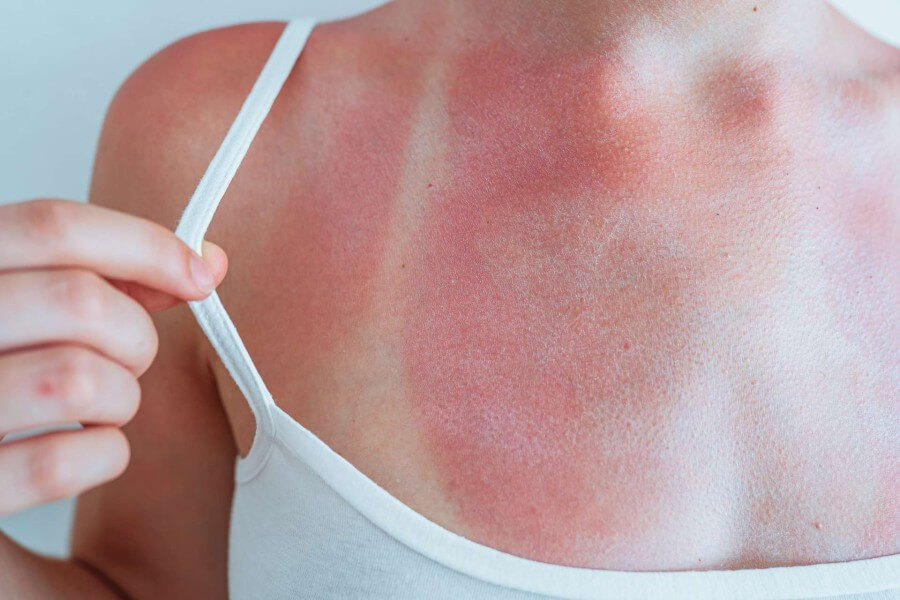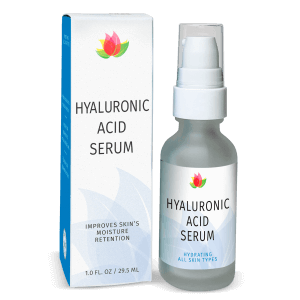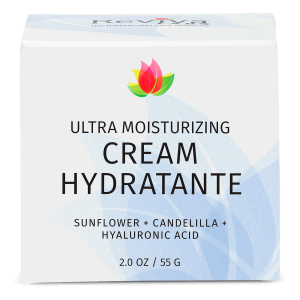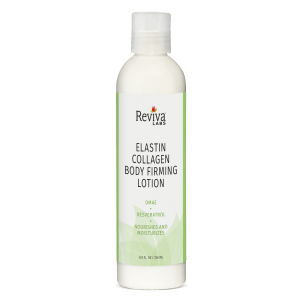Natural, Reviva Labs, Skin Care
How to Treat Sunburns
Summertime is the perfect season for enjoying the outdoors and basking in the warm sunshine. However, the fun can quickly turn into discomfort if you end up with a painful sunburn. Sunburn occurs when your skin is exposed to excessive ultraviolet (UV) radiation from the sun, resulting in inflammation, redness, and even blistering. While prevention is always the best approach, sometimes sunburns are inevitable. In this comprehensive guide, we will explore effective ways to treat and soothe sunburns, allowing your skin to heal and recover.
Step 1. Act Fast to Minimize Damage
When you realize that you’ve been sunburned, it’s crucial to take immediate action to minimize further damage. The first step is to get out of the sun and seek shade. If possible, find a cool body of water, such as a pool or lake, and take a quick dip to cool your skin. However, limit your time in the water to avoid prolonging your sun exposure. Additionally, avoid using ice directly on your sunburn, as it can cause further damage to your delicate skin.
Taking a cool bath or shower can also provide instant relief, but make sure the water is not too cold, as it can be drying to your skin. Another option is to apply cold compresses to the sunburned area. You can create a cold compress by dampening a towel with cool water and gently placing it on your skin. Remember to avoid harsh soaps, as they can irritate your skin further.
Step 2. Soothe and Moisturize Your Skin
After cooling down your skin, it’s essential to keep it hydrated and moisturized. While your skin is still damp, apply a gentle moisturizing lotion to help soothe the sunburn. Opt for lotions that do not contain petroleum or oil-based ingredients, as they can trap heat and worsen the burn. Repeating this moisturizing step regularly over the next few days will help to minimize peeling and promote healing.
Step 3. Reduce Inflammation and Discomfort
Sunburn is an inflammatory reaction, and reducing inflammation is crucial in the healing process. Nonsteroidal anti-inflammatory drugs (NSAIDs), such as ibuprofen or aspirin, can provide relief from pain and reduce inflammation. It’s important to follow the label instructions when taking these medications. Additionally, over-the-counter 1 percent cortisone cream can be applied to calm redness and swelling. Aloe vera, a natural plant known for its soothing properties, can also provide relief when applied directly to the sunburned skin.
Step 4. Replenish Lost Fluids
Sunburns can lead to dehydration, as they draw fluid to the skin’s surface. To prevent dehydration and aid in the healing process, it’s essential to replenish your body’s fluids. Drink plenty of water and consider consuming electrolyte-rich beverages such as sports drinks. These drinks can help restore the electrolyte balance in your body and promote hydration.
Step 5. Natural Remedies for Sunburn Relief
In addition to traditional treatment methods, several natural remedies can help soothe and heal sunburned skin. Baking soda is a versatile household ingredient that can be added to a cool bath to minimize sun damage. Its alkaline properties can help soothe the skin and reduce inflammation. Oatmeal, another common household item, can also be added to a bath to alleviate irritation and retain moisture on the skin.
Aloe vera, often referred to as nature’s miracle plant, has been used for centuries to treat various skin conditions, including sunburns. If you have an aloe vera plant, you can break off a leaf and apply the gel directly to the affected area for immediate relief. If you don’t have access to the plant, you can find 100 percent aloe vera gel in most pharmacies. Apply the gel generously to your sunburned skin, allowing it to absorb and soothe the inflammation.
Chamomile tea, known for its calming properties, can also be beneficial in treating sunburns. Brew the tea as you normally would and let it cool. Once cooled, soak a washcloth in the tea and apply it to the sunburned area. The chamomile tea can provide a soothing effect and help reduce redness and discomfort. However, if you have a pollen allergy, it’s best to avoid this treatment, as it may cause an allergic reaction on your skin.
Vinegar has long been debated as a potential remedy for sunburn relief. Some suggest adding two cups of vinegar to cool bath water to alleviate the sting of a sunburn. However, others caution against this practice due to the high acidity of vinegar, which may worsen the burn. If you haven’t used vinegar as a treatment before, it’s best to avoid trying it on more severe sunburns and consult a healthcare professional for guidance.
Step 6. Protect and Heal with Skincare Products
To enhance the healing process and provide additional relief, incorporating specific skincare products can be beneficial. Reviva Labs offers a range of skincare products formulated to soothe and heal sunburned skin. Their hyaluronic acid serum provides intense hydration, while the calming renewal serum helps reduce redness and inflammation. Finally, the calming rejuvenation cream aids in the recovery of damaged skin. Incorporating these products into your skincare routine can promote healing and provide long-lasting relief.
While prevention is always the best strategy when it comes to sunburns, sometimes they are inevitable. When faced with a sunburn, it’s crucial to act quickly and take steps to minimize further damage. Cooling the skin, moisturizing, reducing inflammation, and replenishing lost fluids are essential for the healing process. Remember to protect your skin from future sunburns by wearing sunscreen, seeking shade, and wearing protective clothing. By following these guidelines, you can effectively treat and soothe sunburns, allowing your skin to heal and recover.










